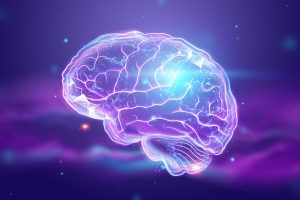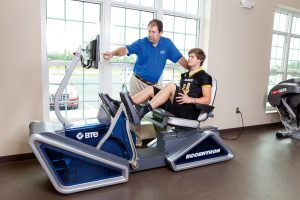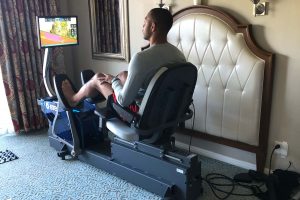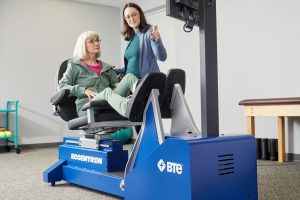
How Eccentrics Train Neural Pathways to Prevent Pain, Reinjury
Clinical ResearchThese findings could change the way we think about and apply eccentric and concentric exercises in rehab. Let’s explore this new research and what it means for our clinical practice.
New research by Lepley et al proposes a paradigm shift in our view of eccentric exercises. Essentially, the study shows that eccentric exercise improves neuromuscular control to prevent pain and reinjury in a way that concentric exercise does not1. These findings could change the way we think about and apply eccentric and concentric exercises in rehab. Let’s explore this new research and what it means for our clinical practice.
Eccentrics Misconception
Sometimes, eccentrics get a bad rep for causing DOMS, delayed-onset muscle soreness. This is a common misconception that we can balance with a deeper understanding of the physiology behind eccentrics. The body can tolerate a higher load with eccentric exercise than concentric exercise due to several biomechanical and physiological factors. Because eccentric exercise has lower perceived rate of exertion, it’s easier to overdo it. People commonly use too much weight or add more reps. Also, people will combine concentric and eccentric exercises, which can further lead to muscle pain.
This situation mainly occurs in high-intensity workout programs, and it does not necessarily apply to rehabilitation. Lepley proposes that the immediate association between eccentrics and DOMS is outdated. Further, the research shows that eccentric exercise can improve neuromuscular control to prevent pain and reinjury in a way that concentric exercise does not. Keep reading for a deeper analysis of Lepley’s findings.
Stop the Revolving Door
Too many times, we treat the “revolving-door patients”. After an injured patient recovers and is discharged, there is some likelihood that reinjury will occur. Lepley’s study postulates that this is, in part, due to conventional rehabilitation protocols. Focusing on building the strength of an injured muscle group can only get a patient so far. Instead of only focusing on the strength, says Lepley, we should also be considering the neuromuscular implications.
Why did the patient injure themselves in that way in the first place? Was it due to some underlying issues in posture, movement patterns, or body awareness? Now that the injury has occurred, are there new protective movement patterns? For example, guarding postures and reflexive movement patterns are a result of neuromuscular feedback. By strengthening the injured area, we address muscle weakness but do nothing to resolve these neuromuscular components. But eccentric exercise has the potential to change the way we rehab injuries.
Eccentric Exercise and Neuromuscular Control
Lepley’s study1 highlights the benefits of eccentric exercise, considering these changes in neuromuscular control. As clinicians, we know that injury naturally affects neuromuscular processing. Injury can lead to guarding postures even long after recovery. Postural and proprioceptive changes can follow injury, and damaged muscles can take longer to respond to activation. These post-injury neuromuscular pathways can also lead to pain.
This new data shows that eccentric exercise can directly influence neural pathways and improve neuromuscular control1. Compared to concentric or isometric contractions, eccentric exercises provide a more significant neural benefit, according to the study. For example, they lead to higher levels of recruitment and excitability. In addition, brain function during eccentric exercise more closely resembles that of a person without injury. These improvements take place even after minimal eccentric exercise, according to the study.
Essentially, Lepley states that focusing on concentric exercises in rehab could encourage the brain to fall into protective, reflexive, tightening movement patterns. The proprioceptive awareness of the entire body changes to “guard” the injured joint. This guarding prolongs the pain cycle and can lead to incomplete restoration and chronic pain.
However, eccentric exercise breaks the brain out of this process. These exercises can dampen the reflexive patterns of the brain that limit movement after injury. By inhibiting these tightening, restrictive movements, we can increase strength and decrease pain, says Lepley.
Clinical Implications
While focusing on the physical and the mechanical, we may overlook the neural impact of an injury. But studies show that ignoring the underlying elements of injuries, such as neural changes, can lead to unsuccessful rehabilitation4. Far too often, patients are “cleared” for full activity and complete their rehabilitation, but their limitations linger. Recognizing the neuromuscular deficits associated with injury can help us to improve our treatment and bring longer-lasting benefits.
Paradigm Shift in Eccentrics
Even a quick Google search will reinforce the idea that eccentric exercise causes pain and soreness. This idea, though, is outdated. This reputation mainly draws from high-intensity exercises intended to cause injury in an experimental setting. Studies1 have shown that these results do not occur in clinical settings. However, due to the generally held idea that these exercises are unsafe, concentric exercises are utilized far more often in rehab settings.
There is no doubt that concentric exercises are effective in building strength. They have their place in both training and recovery. But could a singular focus on concentric exercise play a part in the frequency of recurrence of injuries? By incorporating eccentric exercises in our treatment, we could increase strength while addressing risk factors to prevent further damage.
In Summary
On a neurological level, eccentric exercise has the potential to re-train the brain to process signals in a way that it would without injury. By increasing cortico-spinal excitability, eccentric exercises can override the reflexive movements that guard painful joints. As a result, these exercises could increase muscle strength and flexibility, decrease pain, and avoid reinjury. Although most protocols encourage strengthening and focus on concentric contractions, the potential of eccentric exercise is too great to ignore.
So is eccentric exercise better than concentric? It’s a complicated question. As we’ve heard a hundred times, it depends. Each patient’s needs and capabilities are different. In a discussion of exercise, eccentrics are often dismissed as painful, causing injury and soreness. But new evidence could start to shift our way of thinking about this modality. By incorporating eccentric exercise and synchronizing our approach with the neural effects of injury, we can take our treatment (and our results!) to the next level.
Sydney Moninger, COTA/L is an Occupational Therapy Assistant and freelance writer. She has more than 10 years of clinical experience working in pediatric, orthopedic, and geriatric settings. Most recently, she has been helping patients at a pain management center for orthopedic injuries. Sydney is passionate about patient education and increasing health literacy in the community, which is what got her started in her writing in the first place. She loves discovering new perspectives that improve her clinical practice, and connecting with others on LinkedIn or her Upwork page.
Sources:
- Lepley, L. 2017. “Eccentric Exercise to Enhance Neuromuscular Control”. NCBI. https://pubmed.ncbi.nlm.nih.gov/28571492/
- Twiss, M. 2021. “Retrain the brain to decrease (tendon) pain”. British Journal of Sports Medicine. https://blogs.bmj.com/bjsm/2021/09/21/retrain-the-brain-to-decrease-tendon-pain/
- Weavil, J. 2018. “Corticospinal excitability during fatiguing whole body exercise”. NCBI. https://www.ncbi.nlm.nih.gov/pmc/articles/PMC6363483/
- Lepley, A. 2015. “Quadriceps neural alterations in anterior cruciate ligament reconstructed patients: A 6-month longitudinal investigation”. NCBI. https://pubmed.ncbi.nlm.nih.gov/25693627/





